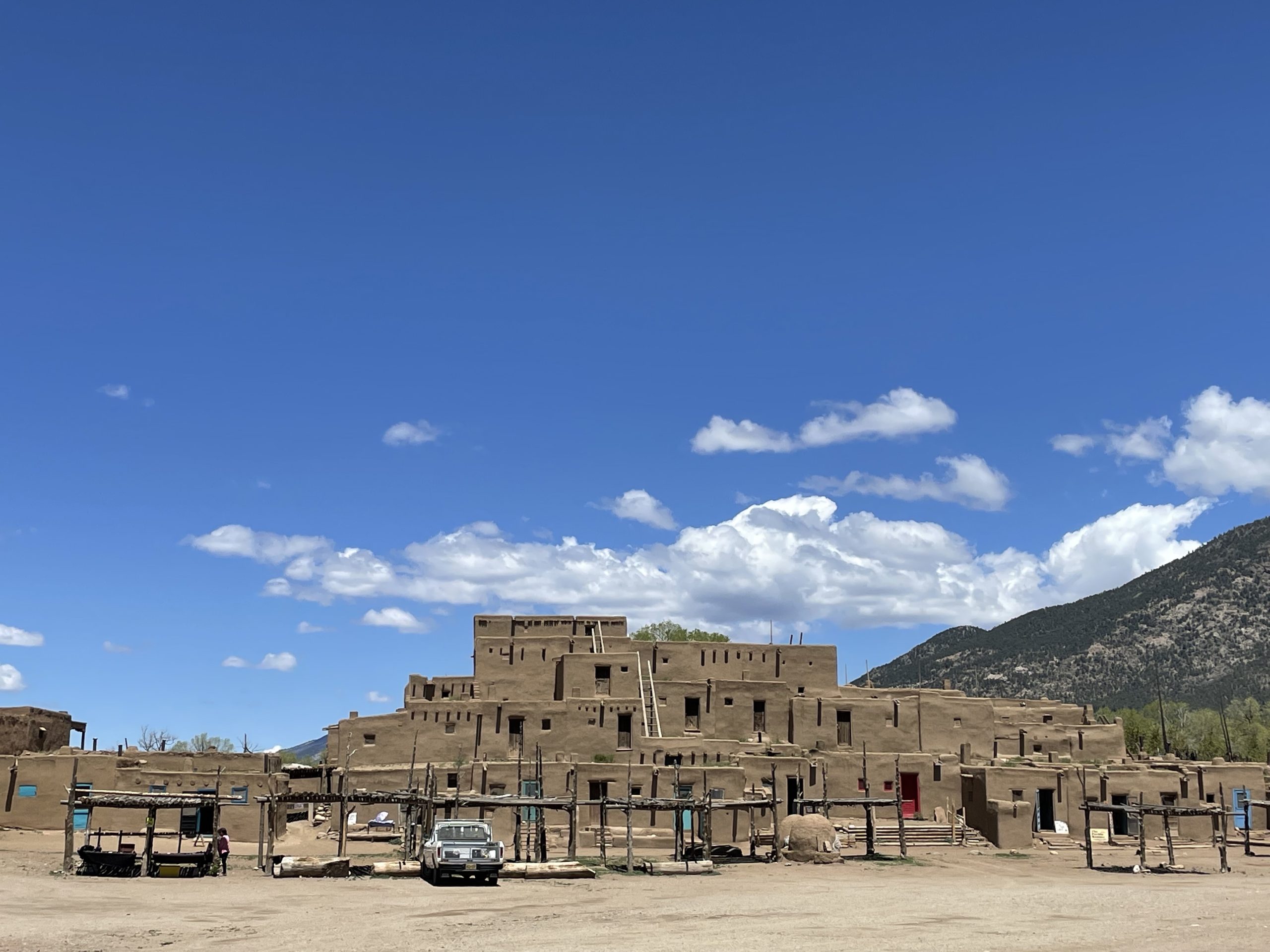In Taos Pueblo, 1000-year-old mud houses with propane and mobile wifi
Now, a lifestyle imposed by circumstance not choice?

Visiting the Taos Pueblo takes you back in time. Supposedly a thousand years but certainly to a time when electricity and running water were very far from human imagination, conception and execution. To a time when people lived in mud houses without doors and windows and a hole in the roof was their only exit and entry point.
The Red Willow Creek people who live in this pueblo (Spanish for village) an hour and a half outside New Mexico’s capital Santa Fe, describe themselves as “the only living Native American community designated both a World Heritage Site by UNESCO and a National Historic Landmark”.
In visiting it, I was transported back to another time – in my life. Or rather to two other times – 2018 and the early-to-mid 1990s.
In 2018, I spent a few days in Matmata, the Berber town in southern Tunisia, where some of the locals still live the way their ancestors did, in mud houses. Unlike the people of the Taos Pueblo though, Matmata was traditionally troglodyte and lived underground. Click here, here, here, here and here for some of my blogs from Matmata.)
In the 1990s, I used to visit northern Indian villages quite regularly to report on political developments especially with the Jat farmers’ movement. In most villages, some of the poorest people live in simple huts, which are called “kachcha” (meaning raw). The houses are built of mud, their inner walls coated with cow dung and the outer with lime for waterproofing and repelling insects.
The Taos Pueblo seemed quite a bit different from both the north Indian villages and Matmata, Tunisia. Their traditionalism seemed less a choice than a lifestyle imposed by their circumstance. Ariane, the young Red Willow Creek woman who led a brief tour in exchange for tips told her flock of visitors, her people had asked to have electricity and running water but the Unesco preferred they keep the pueblo’s traditional character. I have no idea if this is true but if that’s the story being told.
Certainly Butterfly Cafe appeared to have lights and took payment for watermelon juice – $6 for a large chilled glass – using a card machine. Ariane said he used propane to keep the lights on and wifi from his mobile phone for the card reader. This suggested that the people who live in the Pueblo want – maybe even need – mod cons but their world heritage site status is working against their desires?

“Our battered suitcases were piled on the sidewalk again; we had longer ways to go. But no matter, the road is life”
– Jack Kerouac
Also read:

